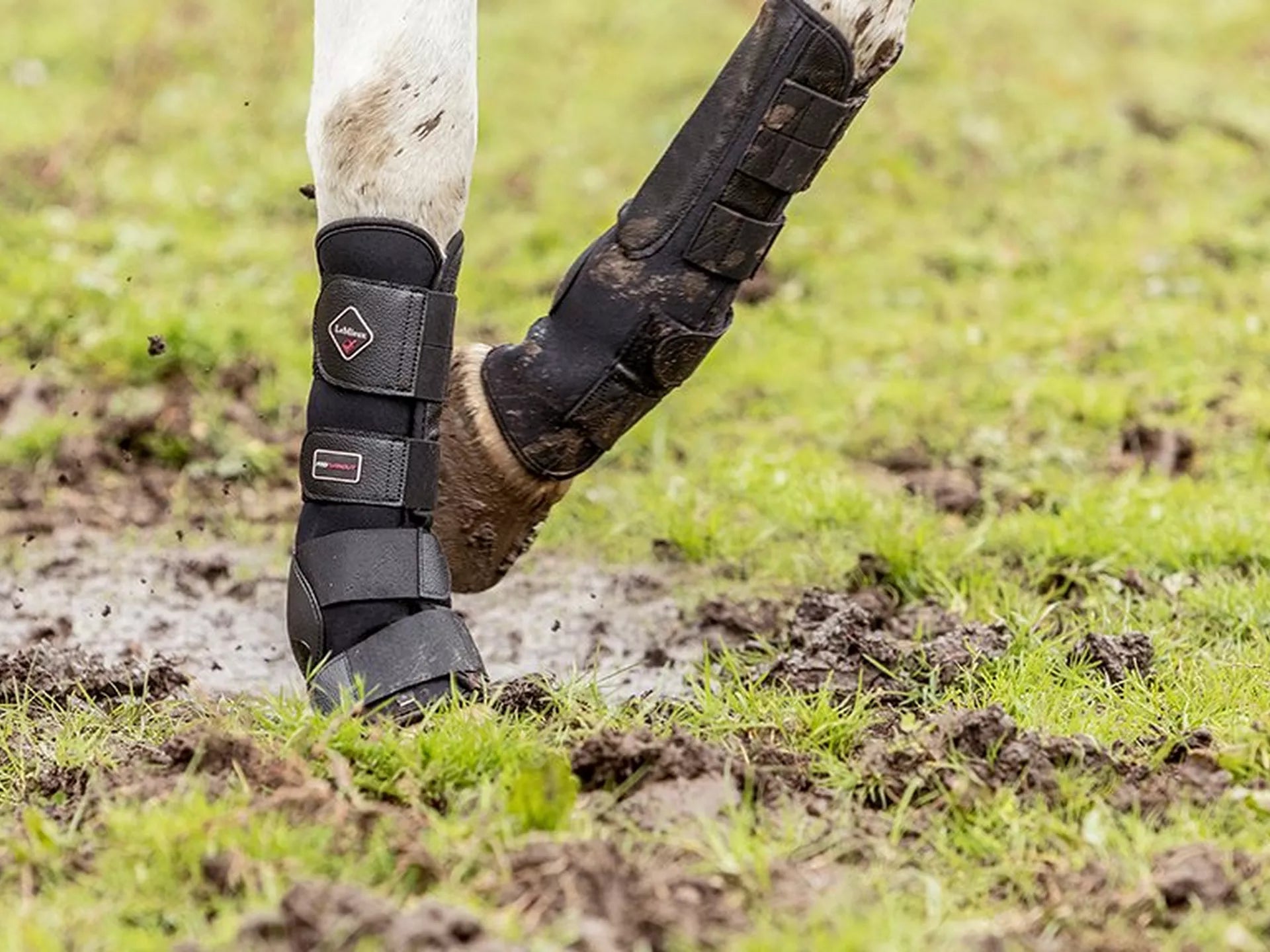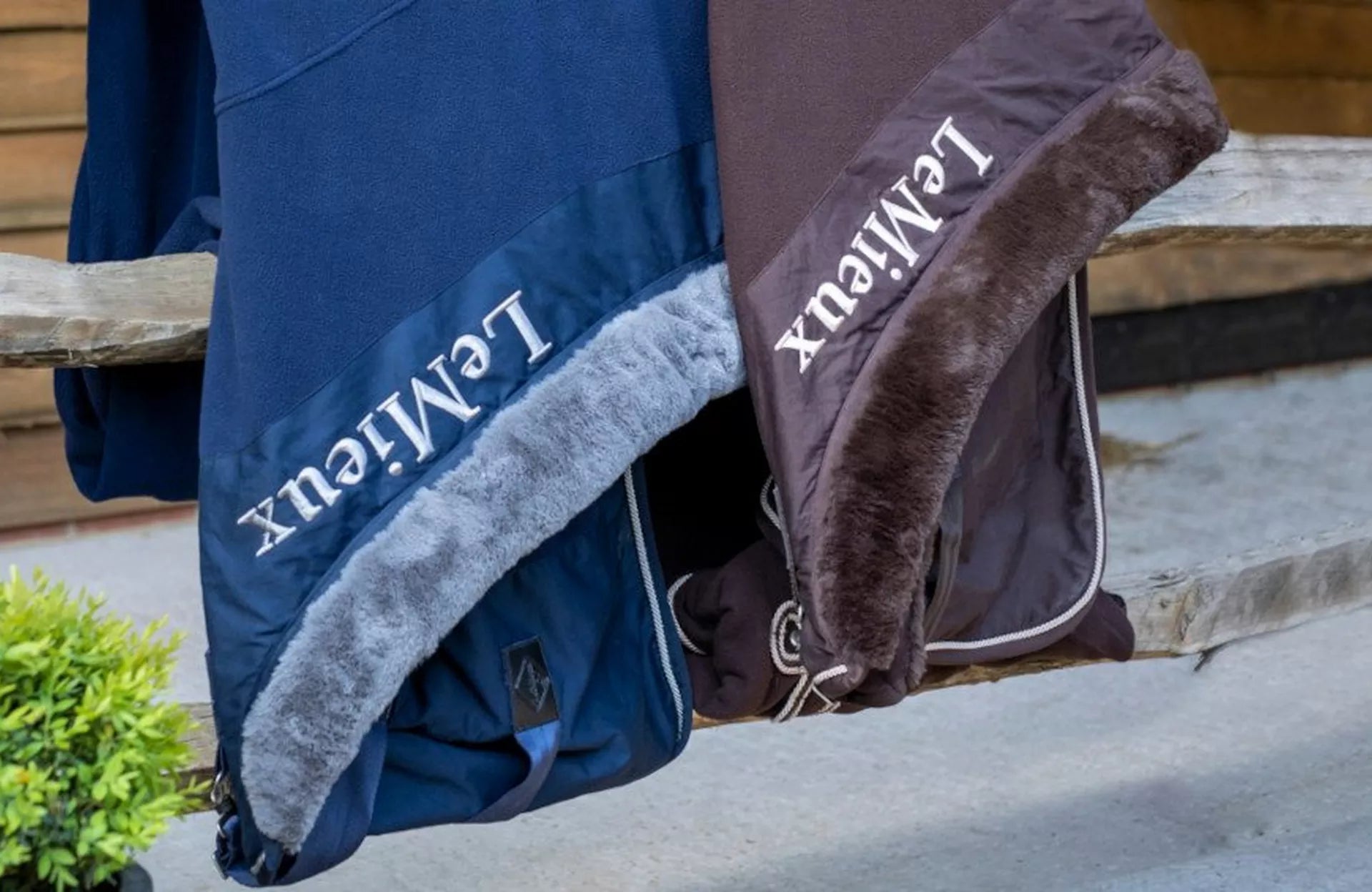What is mud fever?

Image Source: horsemagazine.co.uk
Mud fever is an uncomfortable skin infection that is most common on the lower legs of horses from the fetlock down (though some cases see it higher on the leg and on other parts of the body). The condition's official name is pastern dermatitis but you may hear it referred to as 'cracked heels'. It can involve sore scabs forming around the infected areas. It is most common in horses regularly exposed to wet conditions such as muddy fields (hence the name 'mud fever').
Horses have several forms of bacteria, fungi and other parasites that happily live on the surface of their skin without causing any harm. However, if the skin becomes damaged these organisms are able to get under the surface and cause infections. When the skin is wet it softens and becomes more susceptible to damage. This is where it all begins. Mud will rub against the surface of the skin causing abrasions in the skin. Another factor that people often don't consider is that sandy surfaces, like an arena, can also damage soft skin.
When is it most common?
Obviously, our fields are most likely to be muddy in the wetter, winter months. They can become especially muddy if they are heavily used by lots of horses as this can churn up the grass. If the field has poor drainage this can also lead to the build up of mud. This all means that mud fever in turn is more common in the wetter months of the year (though in Britain it feels as though they're all wet!).

Image Source: thespruce.com
It's logical that as your horse comes in with muddy legs you'll want to wash them before putting them in their stable for the night or riding them.
Many people think that washing mud off the legs will prevent mud fever but that isn't the case. As mentioned, wet skin means soft skin. If you wash your horse's legs and leave them to dry naturally you're making the skin more susceptible to damage. If you are going to wash your horse's legs after turnout, make sure they are completely dry afterwards by using a clean towel.
Unfortunately for cob lovers, mud fever is more common in horses with more hair. This is partially because it takes longer for the hair to dry so the skin is surrounded by moisture. It is also harder to spot abrasions and early signs of mud fever under the hair.

Image Source: horseandhound.co.uk
How do you know if your horse has mud fever?
There are various symptoms of mud fever that you'll want to keep an eye out for they include:
- Crusty scabs forming on the surface of the skin
- Matted areas of hair around the affected area
- When the scabs fall off/are removed you'll notice small, moist lesions on the tissue below.
- If the scabs are detached you may notice a thick, creamy discharge between the skin and the scabs. This can be white, yellow or even have a hint of green.
- You may see deep fissures or ridges in the skin that can split open. This is where the name 'cracked heels' comes from.
- Hair loss around the infected area revealing raw, inflamed skin.
- Heat and swelling can be common and the lower legs can become very sore. It can be especially painful if the infected area covers the fetlock as they need to flex the joint to move.
- The pain can potentially lead to lameness or an unwillingness to move.
- In some extreme cases this can lead to a loss of appetite and lethargy.
How to prevent
The main aim of preventing mud fever is to avoid the legs getting wet for long periods or on a regular basis. A good place to start is to avoid washing your horse's legs as much as you can. We know it is tempting but it may be a good idea to wait for mud to dry by itself and brush it off.
You can try to waterproof the legs before turning out or riding in wet conditions. You can do this by using barrier creams or by covering the legs in oils (for example pig oil) that are hydrophobic. You may also opt for using turnout boots as a more physical barrier to the mud. When using any form of protection, make sure the legs are clean underneath because otherwise you're simply trapping any infecting bacteria in.

Image Source: horsehealth.co.uk
As mentioned earlier, fields get wetter and muddier in the winter months. It can be a good idea to separate fields into paddocks and rotate which ones are used throughout the year. You may also consider using electric fencing to section off particularly wet and muddy areas to discourage your horse standing in them. Although it can become frustrating when yard owners bring in restricted turnout rules sometimes they are necessary for maintaining the quality of the turnout. You may decide that if your horse is susceptible to mud fever you need to keep them stabled for a period when weather conditions are at their worst.
You may even want to consider adding supplements to your horse's diet that promote healthy skin. You'll see other great benefits such as a healthy coat too.
How to treat?
The best place to start is to remove your horse from situations that will get their legs wet and to then make sure the area is clean. When you initially clean the legs be sure to get them dry as soon as you can with a clean towel. Be sure to give your horse a nice clean bed, preferably a soft material that won't scratch the skin such as shavings. If you maintain this well it will help to keep their legs relatively clean without the need to repeatedly wash them. From then on try to avoid washing your horses legs regularly but if you do, dry them thoroughly. You may use an arena as turnout to avoid mud. Remember, though, that sandy surfaces can irritate mud fever so use turnout boots if this applies to your arena.

Image Source: proequinegrooms.com
If your horse has lots of feather you may need to clip some off. This will allow you to see the area better and also allows the surrounding hair to dry faster. Any treatment creams you use will be easier to apply without excess hair in the way too. It also means that any scabs that become detached will fall off and not get tangled in the hair.
Once you are happy that your horse is away from wet conditions and their legs are clean and dry you can think about applying creams and lotions to help the healing process. Products with anti-inflammatory properties can be great for soothing your horse.
For mud fever products as well as a whole range of other horse care products visit naylors.com or visit us in-store.









